
AMD is on a roll on their Ryzen processors. From 4-core consumer variants to 64-core monstrosities, the red team has made sure to cover all of the market with their Zen architecture. Today, we’re going to take a look at a motherboard that will house their high-end desktop (HEDT) processors, Threadripper. A premium processor would only need the best components to bring out their true performance and this leads us to one of ASUS’ X399 motherboards, the ROG Strix X399-E.

Much like other ROG Strix motherboards, the X399-E comes with all sorts of deluxe features that you’d expect from ASUS. These include: Aura-Sync, reinforced PCIe slots, SupremeFX audio, and tons of connectivity options among others. Here are the full specs of the ASUS ROG Strix X399-E from ASUS’ website:
A quick overview of AMD’s Ryzen architecture:
The AMD Zen Architecture

Courtesy of AMD.
AMD’s Ryzen processors are the first batch of CPUs to use their new Zen architecture. This new architecture boasts a massive leap in performance compared to the Excavator microarchitecture. Not only did AMD gain a huge 52% increase in instructions per cycle (IPC), they’ve also put in tons of work in the technology behind the Zen architecture.

Courtesy of AMD.
AMD was able to gain a 52% increase in IPS due to the design of Zen. Aside from the 1.75x larger instruction scheduler window and 1.5x better issue width and resources, Zen also uses a “neural network” to better understand an application. The AI, as AMD would like to put it, prepares CPU instructions so the processor is ready to take on a new workload.
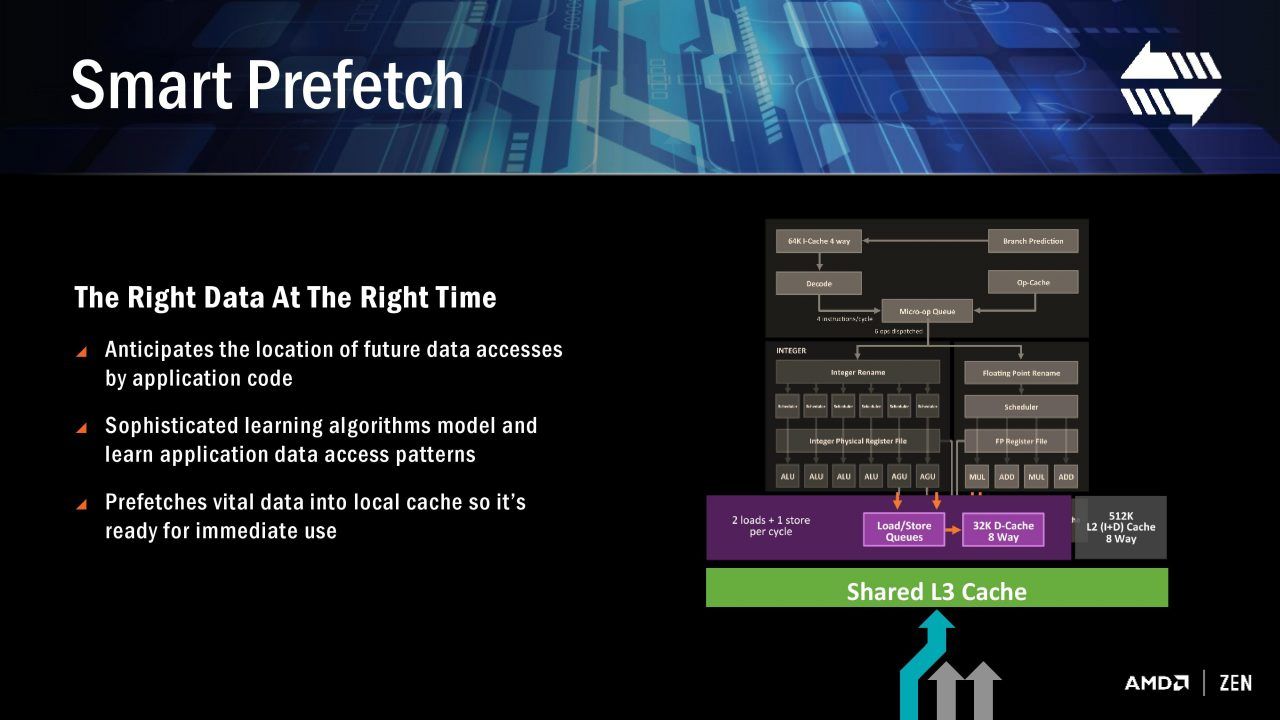
Courtesy of AMD.
This is further helped by the employment of Smart Pretech that anticipates and pre-loads data into cache in the CPU for faster and more responsive computing. The cache is also established at a lower level near the core to get up to 5x more cache bandwidth into a core. This allows Zen to essentially bypass L2 and L3 cache when using routinely accessed micro-operations.
The CPU Complex

Courtesy of AMD.
At the heart of every Ryzen processor is the CPU Complex (CCX). A CCX is a 4-core, 8-thread module, which has 64K of L1 I-cache, 64K L1 D-cache, 512KB dedicated L2 cache per core, and a shared 8MB cache across all cores in the CCX.
Since the CCX is the brain of a Ryzen processor (well, brains since there are more than one CCXes in one CPU), AMD has developed what the call an Infinity Fabric to allow the CCXes to communicate with each other to do meaningful work. This fabric allows the Ryzen to be scalable across all markets such as HPC, servers, HEDT to entry-level computing.

Courtesy of AMD.
The Infinity fabric also acts as a communication bus to allow the exchange of data between CCXes, system memory (RAM), and other devices such as PCIe bus, I/O, and storage. The only downfall of the Infinity Fabric is that it uses RAM to interconnect everything. Thus, you would need fast RAM with low timings for optimal processing performance.
Ryzen processors may also use Simultaneous Multi-threading (SMT). If you’re unfamiliar with SMT, it is essentially AMD’s version of Intel’s Hyper-threading, which allows applications to use multiple independent threads for faster execution.
AMD SenseMI

Courtesy of AMD.
With the help of the Infinity Fabric, AMD’s SenseMI allows its grid of sensors to push the performance of the CPU. According to AMD, their sensors are accurate to 1mA, 1mV, and 1°C, and are polled by the system 1000 times per second. These metrics are then read by the Infinity Fabric to make on-the-fly adjustments to the CPU on the current operating conditions.
Pure Power

Courtesy of AMD.
Every silicon is unique. It might need more power to achieve higher clocks or less power to get to the same clocks. AMD’s Pure Power reads data from the current usage of the CPU and uses that data to streamline power consumption while the CPU is working.
Precision Boost
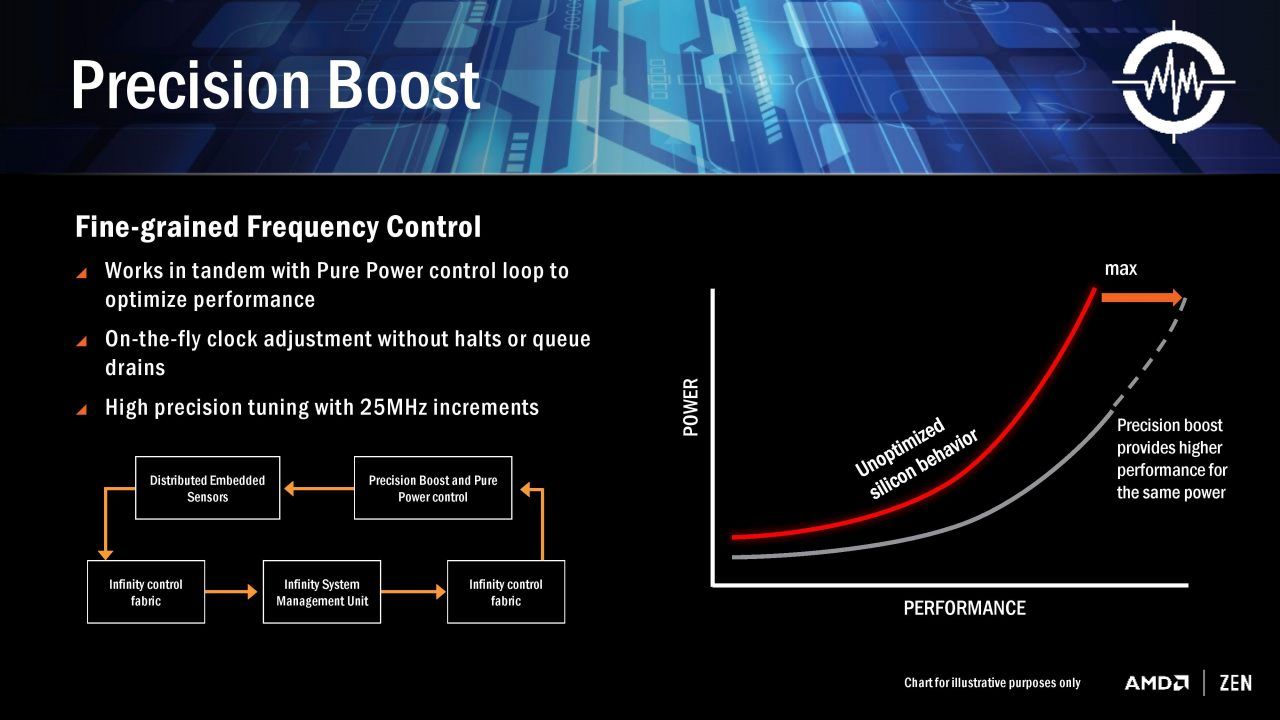
Courtesy of AMD.
Precision Boost gathers data from the Infinity Fabric and adjusts the CPU’s clock speeds in 25 steps. This allows Ryzen and other Zen-based processors in the future to finely tune their frequency target compared to Intel and older AMD processors which only have control over 100MHz steps.
Extended Frequency Range

Courtesy of AMD.
With the help from all the telemetry gathered, AMD’s Extended Frequency Range (XFR) allows the CPU to overclock itself. Since not everyone is willing or know how to overclock, this is a better solution to get more from your CPU without manually overclocking your system. XFR, however, would need a more premium cooling solution to get the best out of your CPU.
On with the review!
Up close with the ASUS ROG Strix X399-E

The ASUS ROG Strix X399-E retains the same ROG Strix DNA as its contemporaries. You’ll be hard-pressed to see any unique design characteristics compared to other ROG Strix motherboards. Of course, ASUS’ Aura Sync RGB has been thrown in on the PCH and the I/O shroud for added flare.
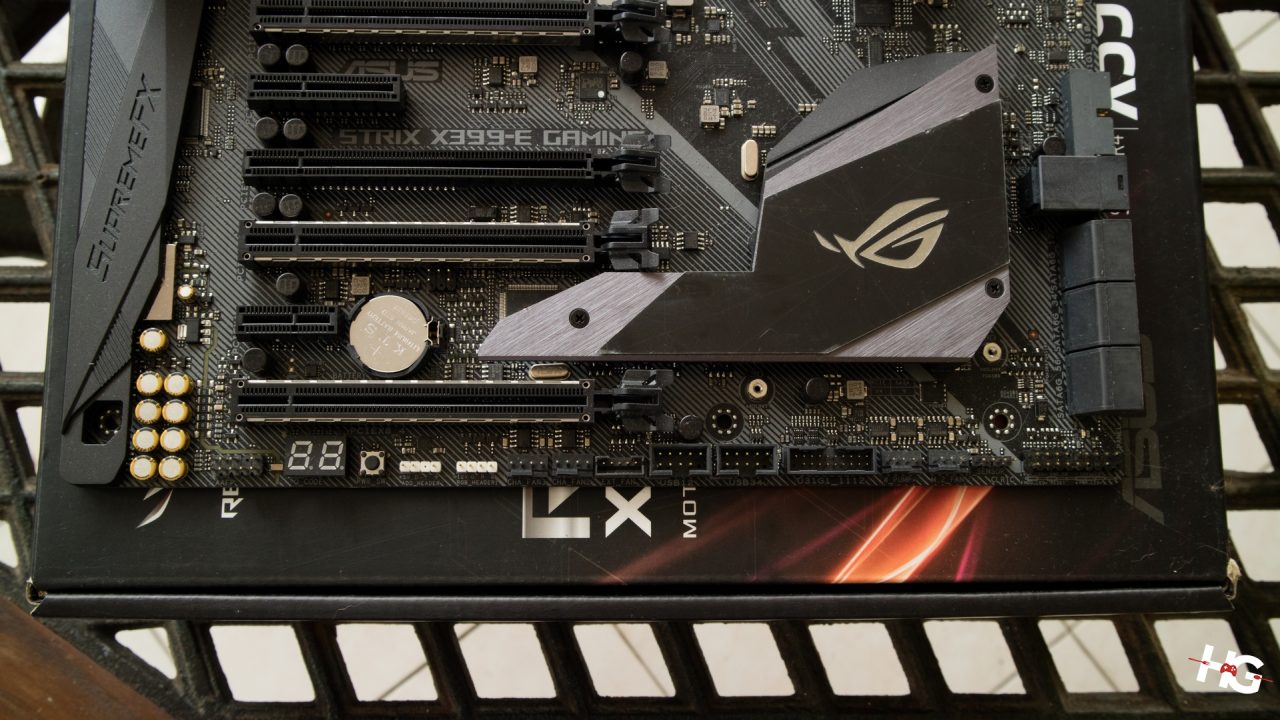
The board comes with four PCIe x16 slots, three of which are reinforced to prevent any damage when mounting large video cards. Three of these can be used for triple SLI/CrossFire since Threadripper has tons of PCIe lanes. For good measure, AMD has also thrown in a single PCIe 2.0 x4 slot and a PCIe 2.0 x1 slot courtesy of the AMD X399 chipset.
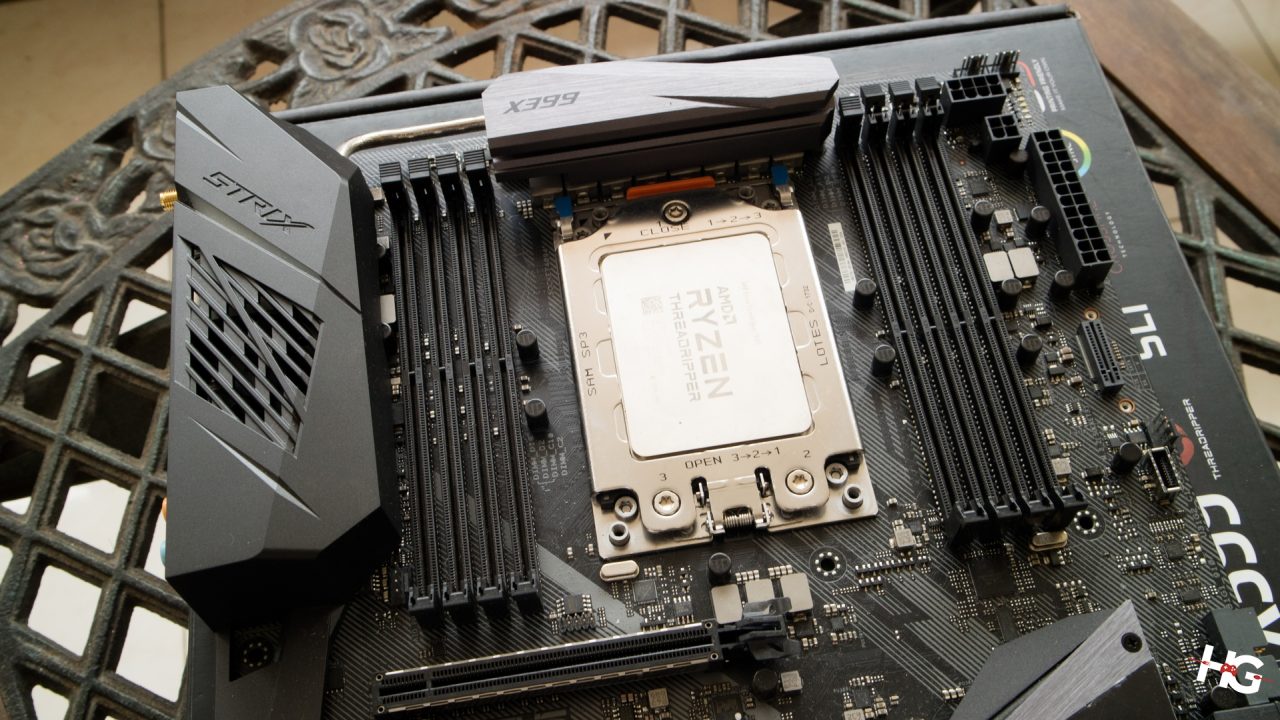
The TR4 socket of the ASUS ROG Strix X399-E is surrounded by eight DDR4 DIMM slots, which support up to eight DDR4 RAM sticks of speeds of up to 3600MHz. Since the CPU area is surrounded by RAM slots, you may run into trouble with RAM height clearance when fitting large air coolers. If you’re planning to populate all the RAM slots with tall DIMMs, you might want to opt to use an AiO cooler instead.

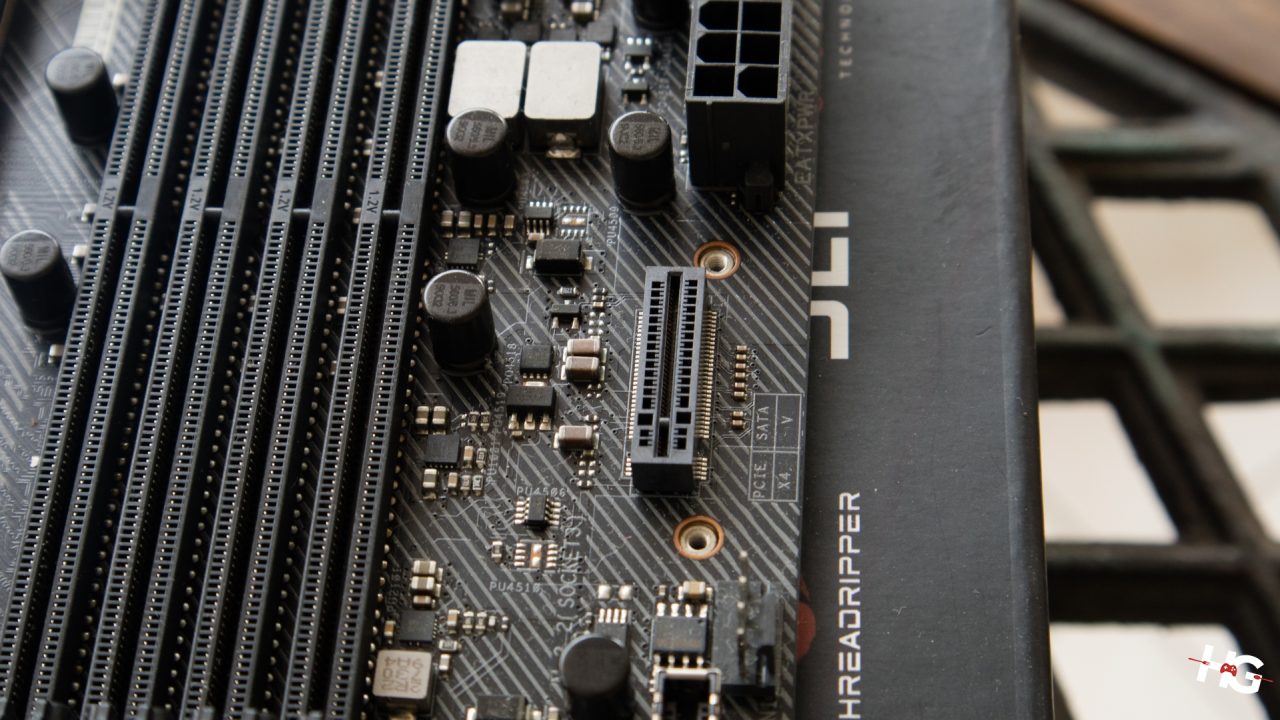
Multiple storage options are available with the ROG Strix X399-E. This includes six SATA III ports, two M.2 slots, and a single U.2 port. The M.2 ports, however, are distributed oddly. One is positioned under the PCH since the PCH heatsink also acts as the M.2’s heatsink while the other M.2 drive would need to be slotted vertically near the 24-pin connector. Nicely enough, ASUS have included a vertical mounting bracket with the board.
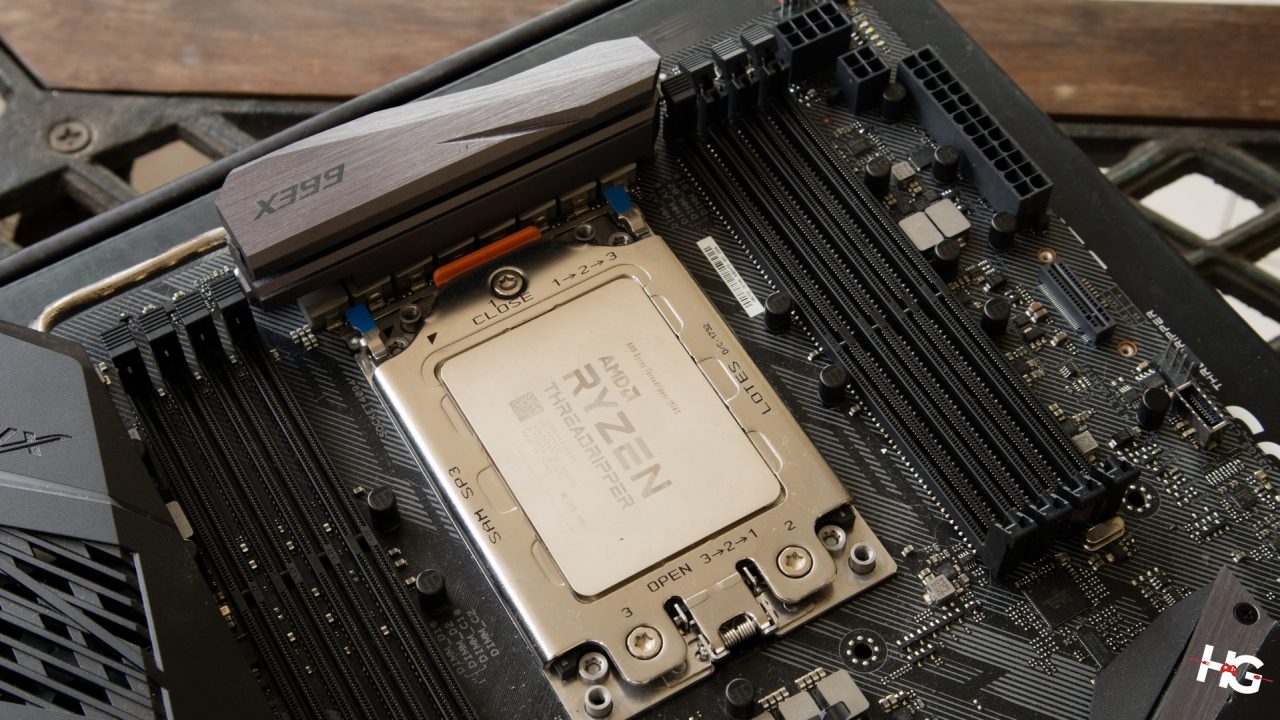
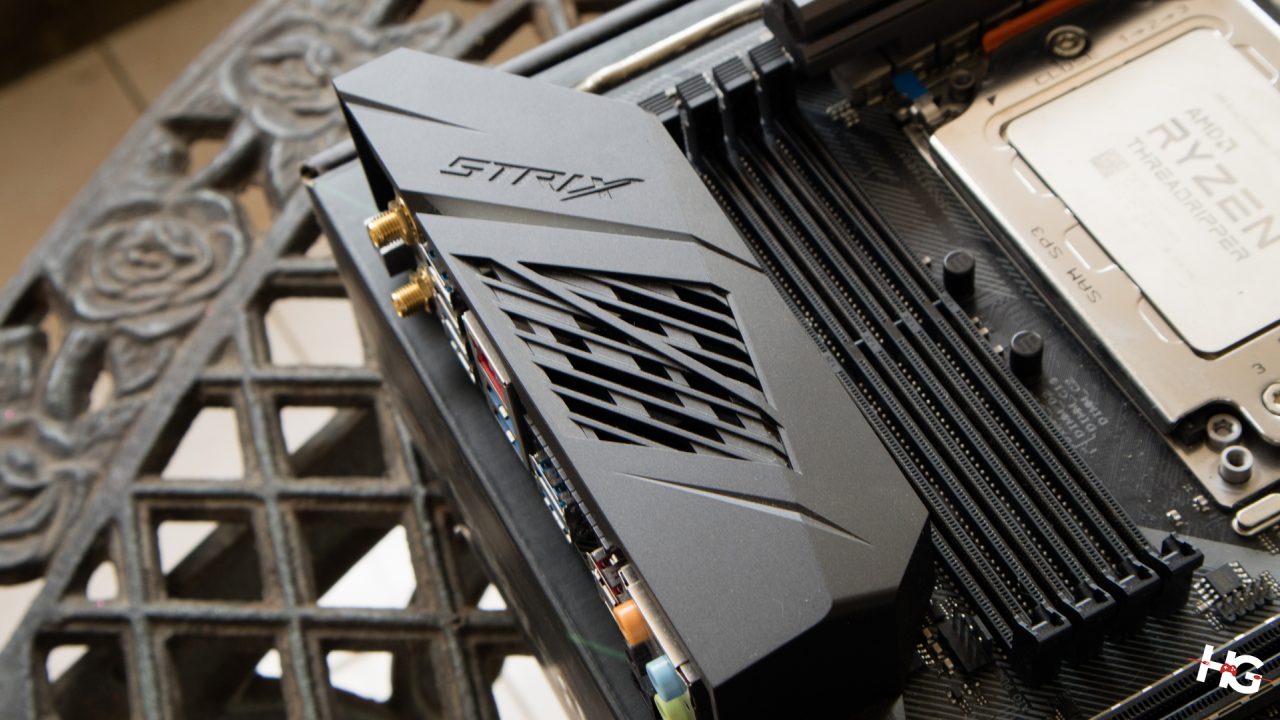
As far as power delivery goes, the board has an eight-phase design cooled by a dedicated heatsink at the top of the TR4 mount and behind the I/O shroud. Cooling is further enhanced a 40mm fan situated behind the I/O shroud.

Speaking of the I/O, the rear I/O of the ROG Strix X399-E has two USB 3.1 Gen2 ports (Type-A and Type-C), eight USB 3.1 Gen1 ports, five audio jacks, one S/PDIF out, a USB BIOS Flashback button, one RJ-45 port, an ASUS 2×2 WiFi a/b/g/n/ac. A Bluetooth 4.2 connection has also been thrown into the mix.
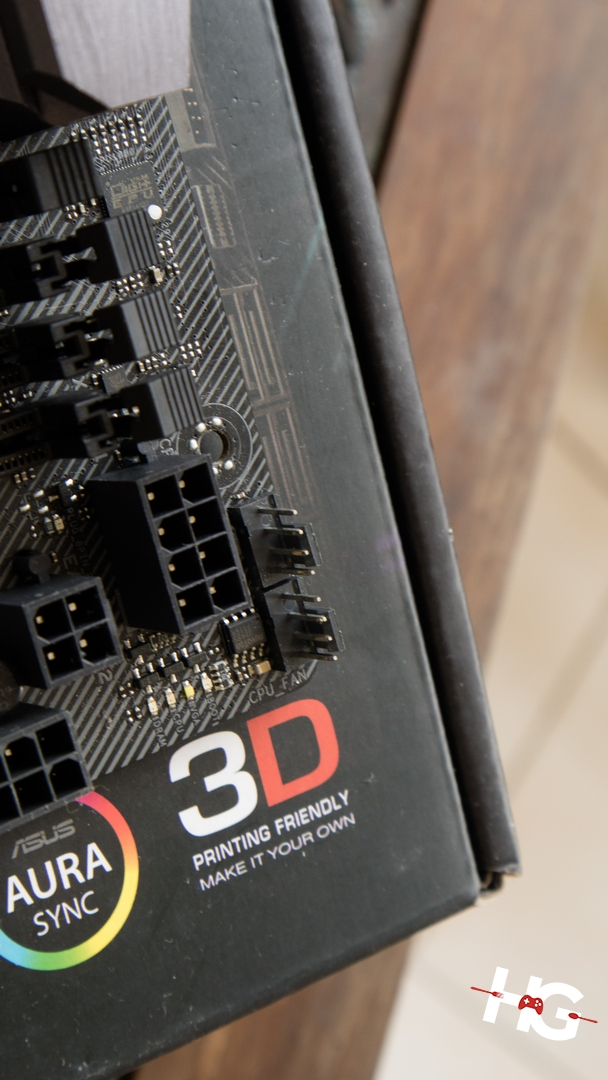
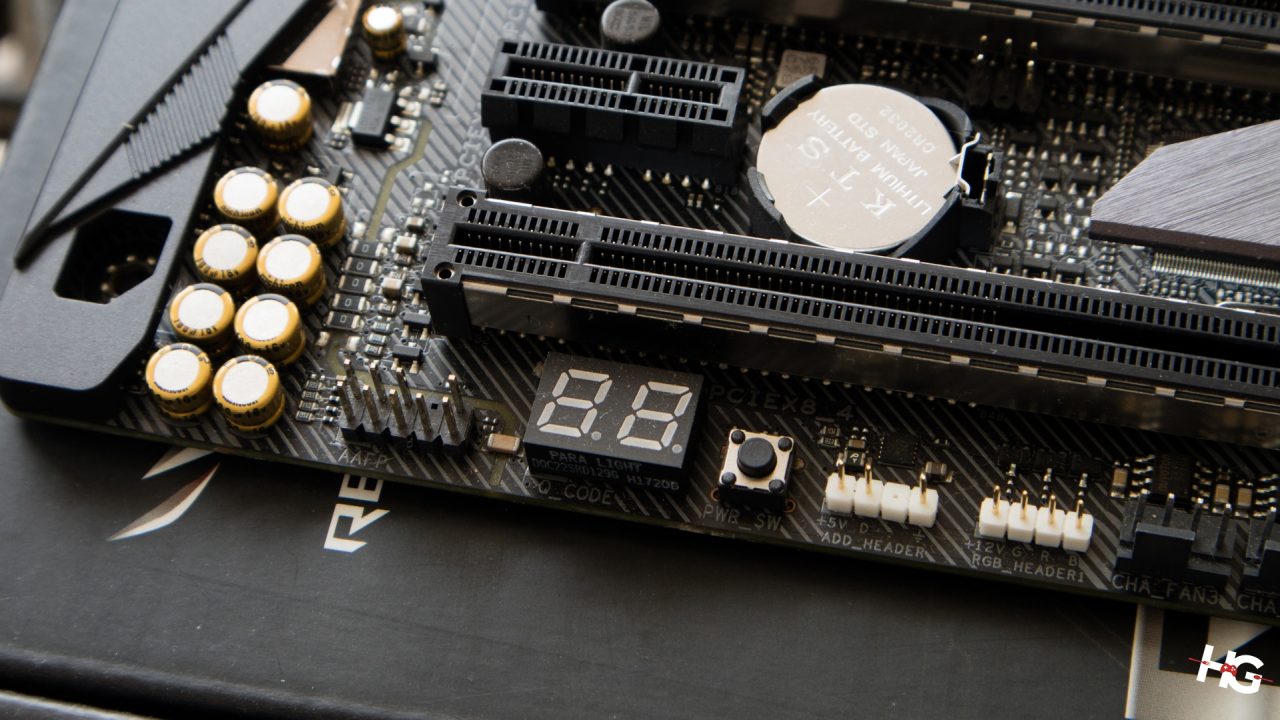
As a premium-priced board, the Strix X399-E comes with tons of 4-pin fan connectors littered throughout. Of course, to make your life much easier, ASUS has included a POST Code LED reader as well as a built-in power button if you wanted to go ghetto and use the board in an open case.
System, Overclocking, and Benchmarks
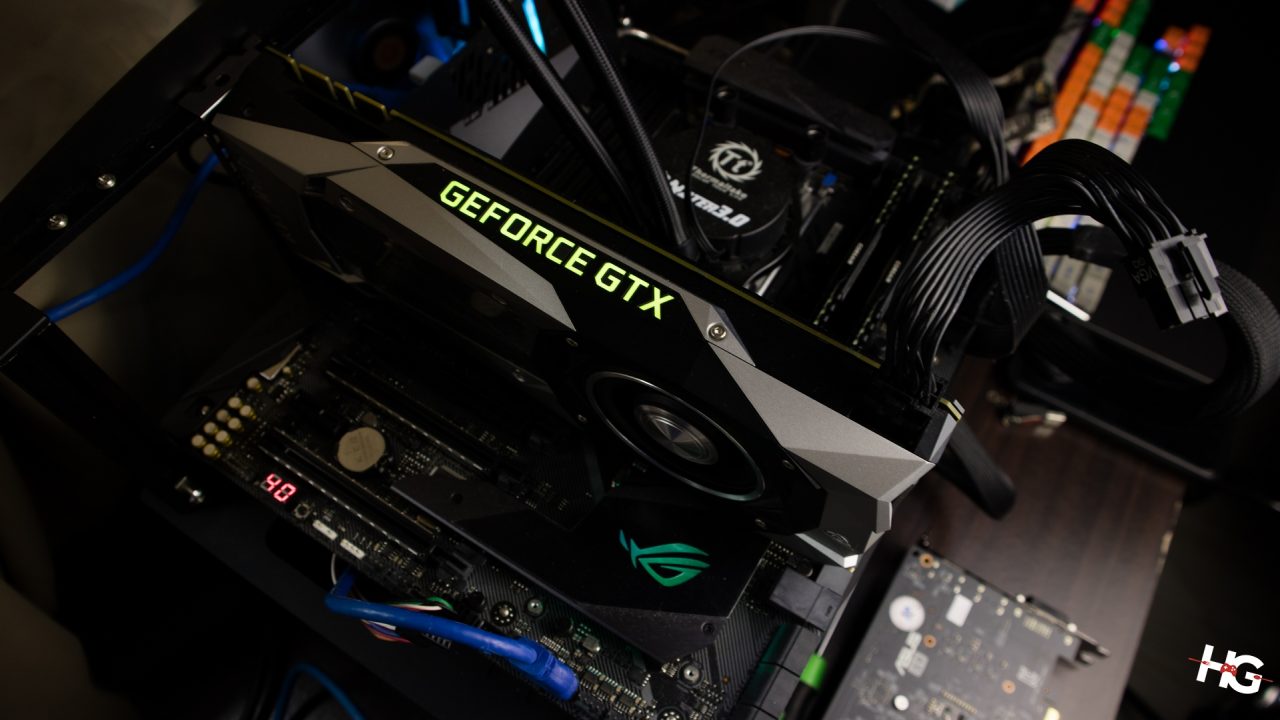
The following components were put on the ASUS ROG Strix X399-E to test its performance:
We were able to push the AMD Ryzen Threadripper 1950X to 4.0GHz on all 16 cores at 1.4v, which is a substantial 600MHz over the base clock of 3.4GHz. Now here are the benchmarks for the ASUS ROG Strix X399-E:
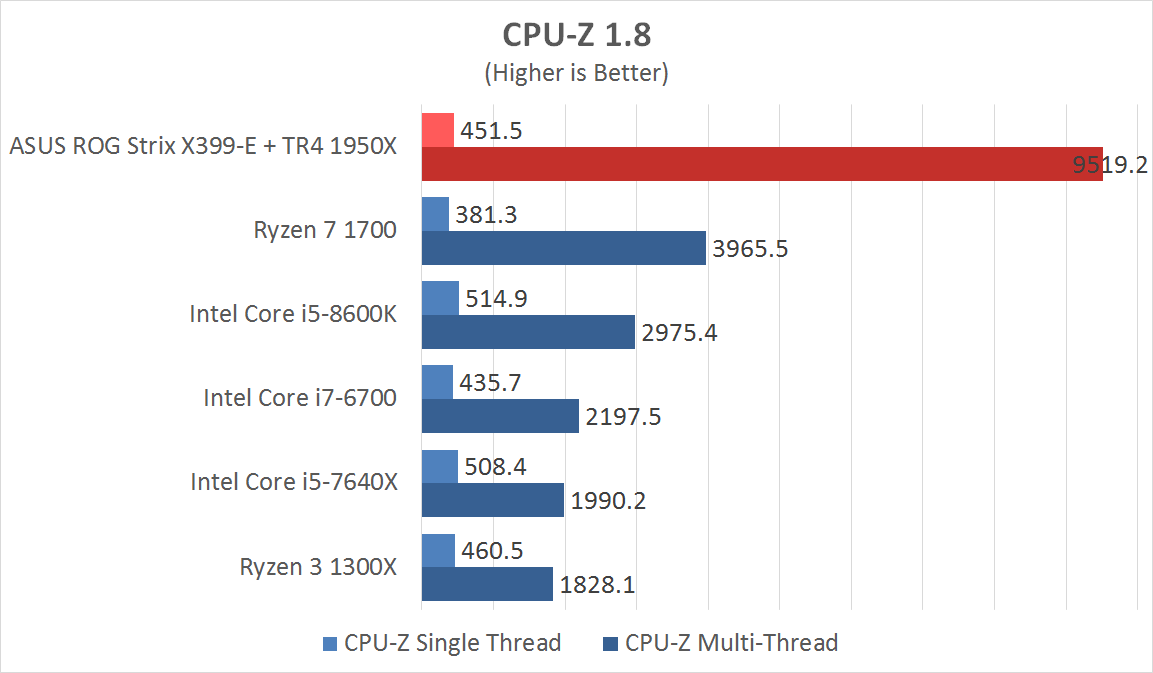

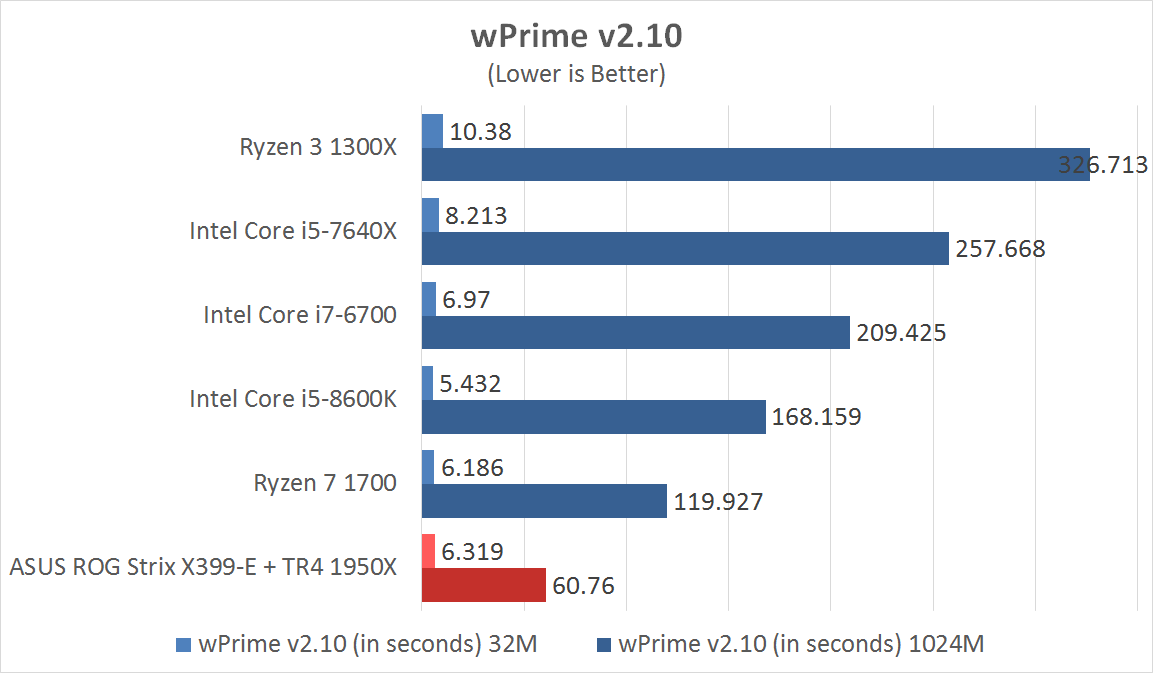
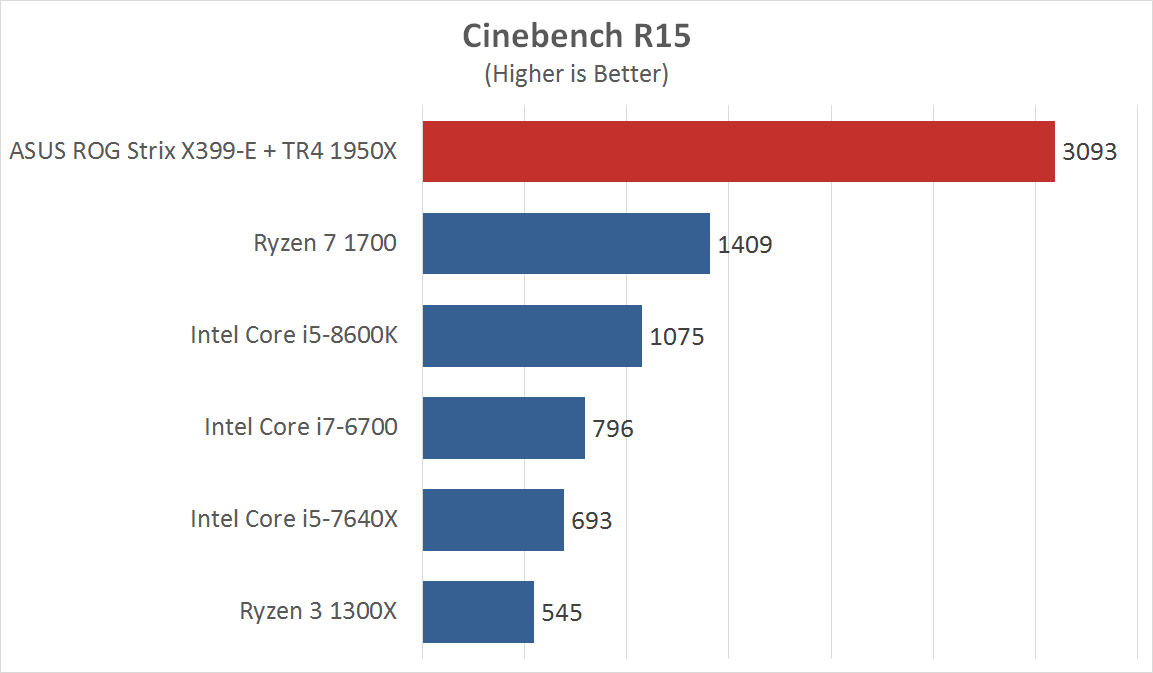


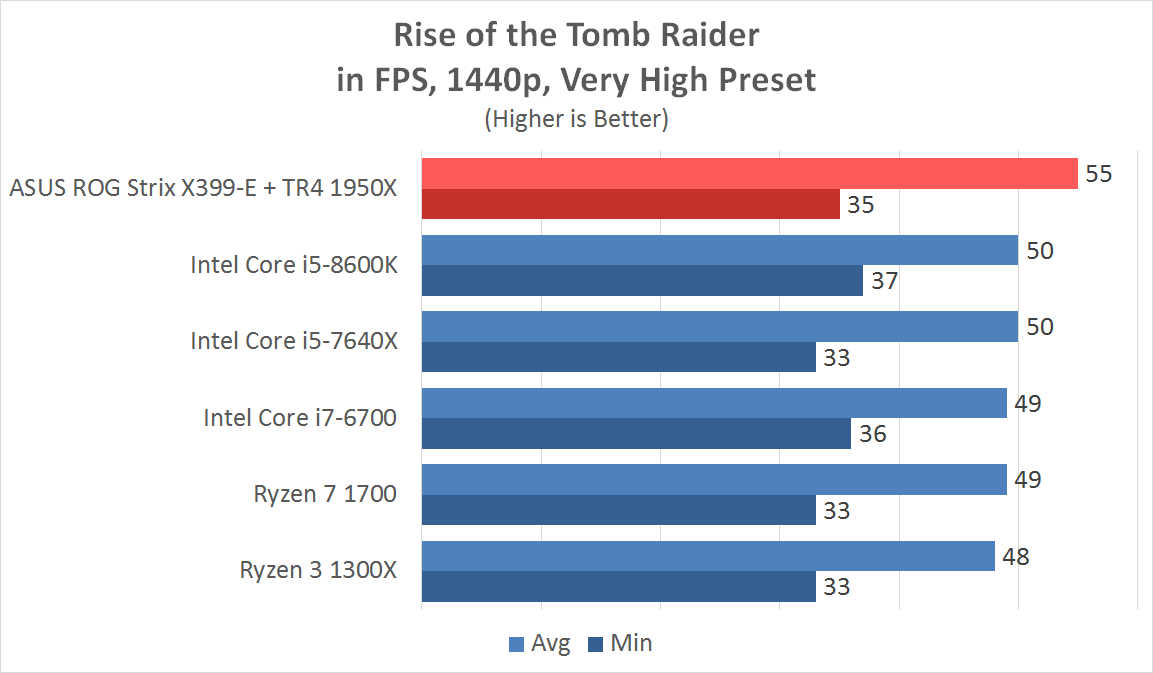
Our data is fairly skewed towards the AMD Ryzen Threadripper 1950X. This is because we’ve never tested other 16-core processors from the blue team. We’ll continue to update our data to give you better benchmark results in the future.
Despite this, the both the 1950X and ASUS ROG Strix X399-E performed admirably on all our tests, scoring the highest in almost all our benchmarks.
Conclusion
Priced at USD 400 or around PhP 20,000, the ASUS ROG Strix X399-E, with its strong overclocking capabilities, loads of features such as Aura Sync RGB lighting, an M.2 heatsink, loads of connectivity options, and solid performance, strikes the perfect balance between price and features offered.
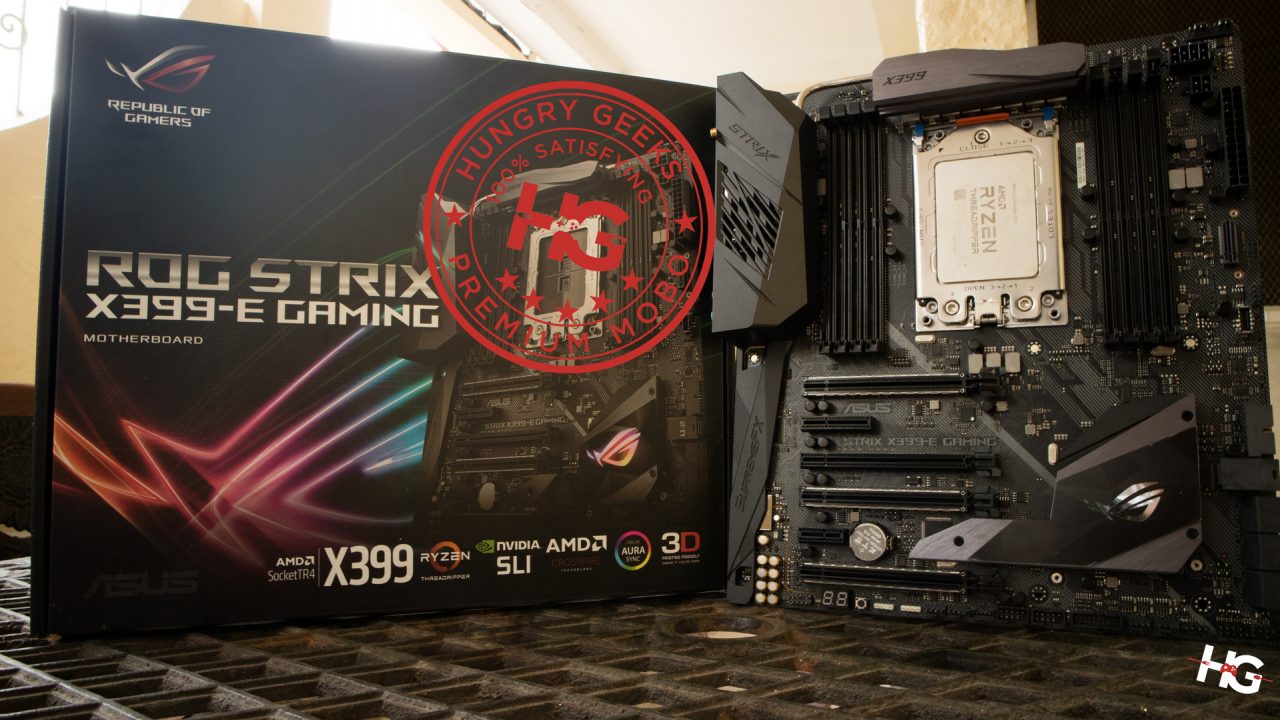
It’s because of these reasons why we’re giving the ASUS ROG Strix X399-E our Premium Motherboard award. If you’re ever looking for a TR4 motherboard for your Threadripper build that won’t go overboard with the price, then this board is for you.
